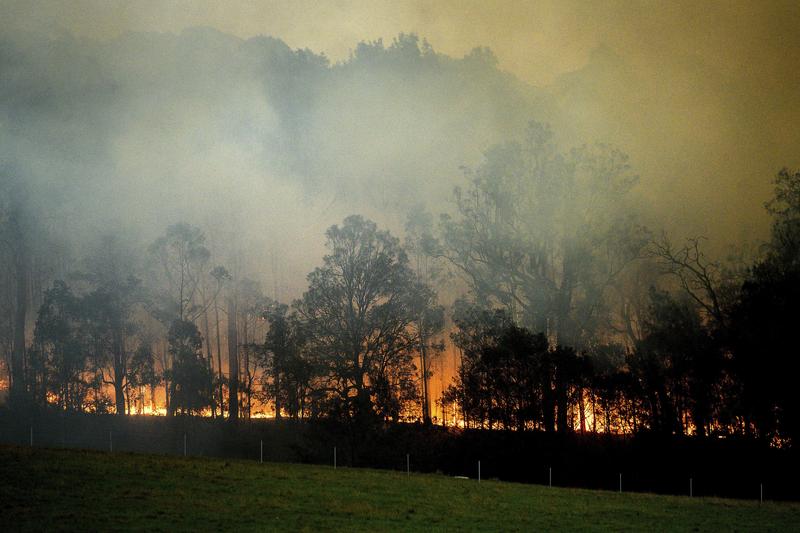 A bushfire burns in Bodalla, New South Wales, Australia, Jan 25, 2020. (NOAH BERGER / AP)
A bushfire burns in Bodalla, New South Wales, Australia, Jan 25, 2020. (NOAH BERGER / AP)
SYDNEY - Australian officials on Tuesday warned communities in hard-hit eastern states to strengthen bushfire defenses as soaring temperatures and strong winds were set to return, threatening to reignite some blazes and start fresh ones.
Since Sept, Australia has been battling bushfires that have killed 33 people and about 1 billion native animals, while 2,500 homes and an area the size of Greece have been destroyed
Since September, Australia has been battling bushfires that have killed 33 people and about 1 billion native animals, while 2,500 homes and an area the size of Greece have been destroyed.
Firefighters have used several days of cooler, damper weather across much of the continent to try and gain control of more than 100 blazes still burning before the weather turns.
ALSO READ: Australia evacuates parts of its capital as bushfires return
“Warm, dry and windy weather is forecast for today. There is a very high fire danger particularly in the central and south east of the state,” the New South Wales (NSW) Rural Fire Service (RFS) said on Twitter. “Worsening conditions are forecast for later the week so prepare now.”
The RFS said people should clear their properties of any flammable vegetation, while any broken roof tiles should also be repaired to protect houses from airborne embers.
As NSW readied for more bushfires, residents in Australia’s capital, Canberra woke on Tuesday to thick, hazardous smoke covering the city.
Firefighters are battling to contain a fire in Namadgi National Park near the capital and authorities worry the blaze may spread as temperatures are set to top 35 degrees Celsius later on Tuesday.
Defense and emergency services personnel were knocking on the doors of homes near the blaze on Tuesday morning, urging residents to be ready to evacuate.
READ MORE: Floods as storms lash some bushfire-hit regions in Australia
Here are Tuesday’s key events in the bushfire crisis:
- NSW firefighters were tackling 54 fires. Only one fire is at “watch and act” warning level, meaning no immediate danger. The rest are at lower warning levels.
- In Victoria state, there were 35 active blazes, none of which were deemed an immediate threat to property.
- A high pressure weather pattern is set to move across Australia’s east coast later this week, bring soaring temperatures over the weekend.
- Researchers from the University of Sydney on Tuesday released a report that found just three days of low-level bushfire smoke exposure increased the threat of cardiac arrest, with people over 65 at higher risk.


